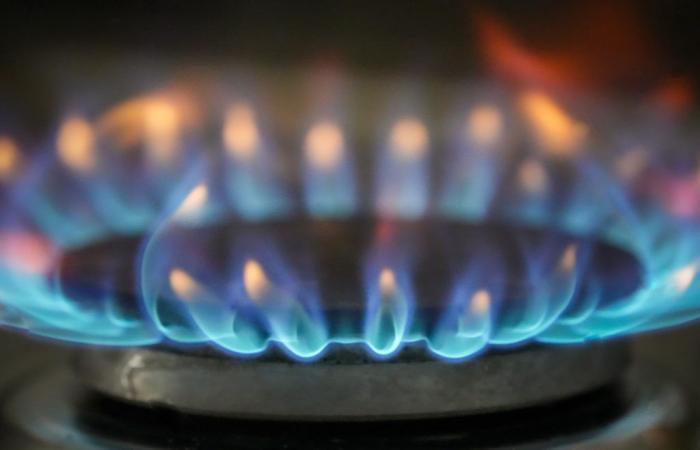By Aurian de Maupeou
Co-founder
Updated
30/06/2024
min read
The new gas network usage rate (GRDF and some local companies) comes into effect on July 1, an increase of 27.5% compared to July 1, 2023. Compared to the annual bill of a consumer heated by gas, the Energy Regulatory Commission announces an increase of 5.5% including tax. Selectra explains to you what we won’t explain to you elsewhere!
How much is ATRD really increasing?
The ATRD is made up of a fixed part (integrated into the subscription that the customer pays every month, whether they consume or not) and a variable part (integrated into the price of the kWh). Let’s first calculate the evolution of the ATRD between July 1, 2023 and July 1, 2024 to see if this incredible +27.5% is fairly distributed among consumers.
| Pricing option | Part | 2023 | 2024 | Evolution |
|---|---|---|---|---|
| T1 | Part fixe | 42,24 | 51,96 | 23,0% |
| Part variable | 33,23 | 42,37 | 27,5% | |
| T2 | Part fixe | 139,44 | 175,92 | 26,2% |
| Part variable | 8,93 | 11,39 | 27,5% | |
| T3 | Part fixe | 982,92 | 1231,08 | 25,2% |
| Part variable | 6,42 | 8,19 | 27,6% | |
| T4 | Part fixe | 16069,56 | 20469,6 | 27,4% |
| Part variable | 0,87 | 1,11 | 27,6% |
The increase is almost uniform for all consumers. It only weighs slightly more on the price of the kWh than on the subscription, which is already colossal compared to its equivalent for electricity.
Let us now calculate the increase for the average French customer heated by gas (16,500 kWh/year) between July 2023 and July 2024 based on the benchmark gas price published by the CRE.
| July 2023 | July 2024 | Evolution | |
|---|---|---|---|
| Subscription | 257,18 | 277,43 | 7,87% |
| Price per kWh | 0,08195 | 0,10261 | 25,21% |
| Annual cost | 1609,355 | 1970,495 | 22,44% |
We observe an increase in the price of kWh almost in line with the increase in the ATRD. This is surprising, because it means that the supply share is increasing, while the PEG price on which it is calculated is decreasing compared to summer 2023. More surprisingly, the subscription price increases very little. This includes the fixed share of the ATRD, a tax called the CTA, a supplier share and VAT at 5.5%. The only explanation is a decrease in the supplier share. It will be interesting to check what is happening in the actual price lists of suppliers, who often struggle to do better than the benchmark gas price.
The Minister of the Economy announced in May that the battle against inflation had been won. And, indeed, the increase in the price of use of the gas network does not come from there. It can be explained very simply: gas consumption in France has collapsed in recent years, and the costs of network managers (mainly GRDF) continue to increase. It is therefore necessary to distribute increasing sums over fewer kWh. The price per kWh is therefore exploding.
GRTGaz, which is very concerned, since its profitability in the first instance, its existence in the second, are at stake, has published useful data on its website. Gas consumption in France between the 2018-2019 season and the 2023-2024 season fell by 25%. A drop that the ATRD 6, which covered the period 2020-2024, had not anticipated, and which therefore generated a hole in the revenues of GRDF and GRTGazthe Engie subsidiaries which transport gas to consumers.
The two culprits for this increase are not GRDF and GRTGaz, but marked energy sobriety (the drop in climate-adjusted consumption is 21.1% between 2018-2019 and 2023-2024) and milder winters (which explain 3.9 out of 25% drop over the period) – source.
What to do ?
The situation is untenable. Such an increase undermines the price competitiveness of gas compared to electricity. Especially if we add to this the preference of climate-sensitive consumers for electricity (32 grams of CO2 per kWh in 2023 according to RTE, compared to 227 grams for gas according to GRDF). The risk is an acceleration of the flight of customers who can afford it towards electricity, thanks to the development of heat pumps and self-consumption.
For GRDF, the green gas promotion campaigns (see the very successful video featuring Jamel Debbouze) will not be enough. Nor will the development of biomethane, which is still marginal (around 2% of gas consumed in France) and highly subsidized. One option is to inject hydrogen into the gas network, but this is a long-term option, both for technological and economic reasons. A reduction in the network infrastructure does not seem to be on the agenda. Will the gains made thanks to the Gazpar meter save the gas network?






